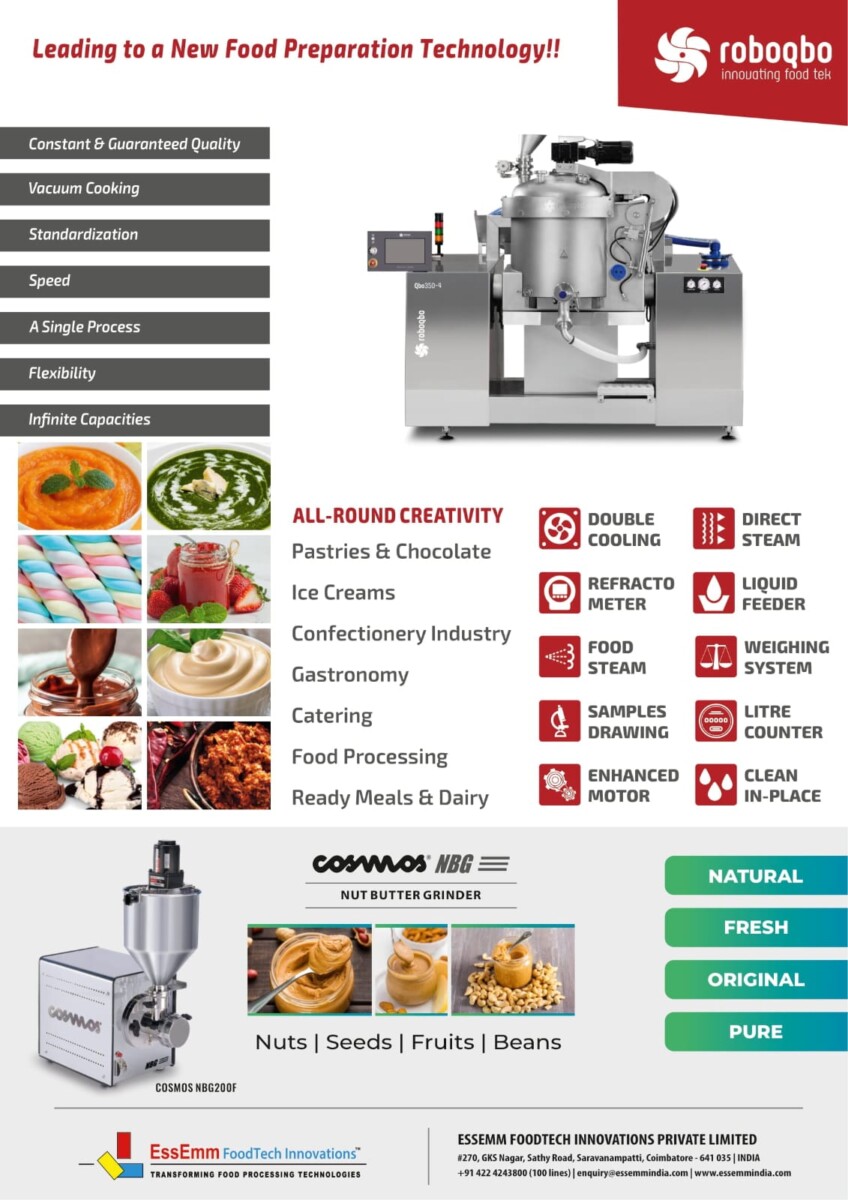THIS ARTICLE IS POWERED BY

-Tanisha Saxena (cbedit@imaws.org)
Gravy, that rich and savory sauce often enjoyed with meats, potatoes, and other dishes, is a staple on many dinner tables around the world. While it might seem like a simple addition to a meal, the process of manufacturing gravy comes with its own set of challenges. From sourcing quality ingredients to meeting consumer demand, gravy manufacturers must navigate various obstacles to produce a product that satisfies both taste buds and bottom lines. We speak to the industry experts and get a scoop on this.
 Speaking of the Ingredient Sourcing and Quality Control, Kiran Hazari, chief Marketing and sales officer at VinZillion group/Zissto, explain, “One of the primary challenges faced by gravy us, as manufacturers is ensuring a consistent supply of high-quality ingredients. Gravy typically requires a combination of stock, fat, flour, and seasonings, each of which must meet stringent standards for freshness and flavor. Sourcing these ingredients can be complicated by factors such as seasonality, geographical limitations, and fluctuations in market prices.”
Speaking of the Ingredient Sourcing and Quality Control, Kiran Hazari, chief Marketing and sales officer at VinZillion group/Zissto, explain, “One of the primary challenges faced by gravy us, as manufacturers is ensuring a consistent supply of high-quality ingredients. Gravy typically requires a combination of stock, fat, flour, and seasonings, each of which must meet stringent standards for freshness and flavor. Sourcing these ingredients can be complicated by factors such as seasonality, geographical limitations, and fluctuations in market prices.”
He further adds, “Maintaining consistent quality is essential for gravy manufacturers to retain consumer trust and loyalty. Any variation in flavor, texture, or appearance can result in dissatisfaction among consumers and damage the brand’s reputation. To mitigate this risk, we as manufacturers invest significant resources in quality control measures, including rigorous testing, supplier partnerships, and adherence to strict manufacturing protocols.”

Highlighting the Production Efficiency and Cost Management, Ritesh Kumar Singh who is a sales manager at Vivan Foods Private Limited having their own brand name “FRIC BERGEN“, opine; “Another challenge for gravy manufacturers is achieving optimal production efficiency while managing costs effectively. The process of manufacturing gravy involves precise measurements, heating, mixing, and packaging, all of which require specialized equipment and skilled labor. Any inefficiencies or disruptions in the production process can lead to increased expenses and reduced profitability. Furthermore, the cost of raw materials, labor, energy, and transportation can fluctuate, impacting the overall cost of production. As manufacturers we continually evaluate our operations, streamline processes, and explore cost-saving opportunities without compromising on quality or safety standards.”

Regulatory Compliance and Food Safety is yet another hurdle. Deepak Vasu, General Manager at tsk hospitality accentuates on this, “Food safety regulations and compliance standards present significant challenges for gravy manufacturers. The food industry is subject to stringent regulations imposed by government agencies to ensure the safety and integrity of food products. As Manufacturers we adhere to guidelines regarding ingredient sourcing, processing methods, labeling, and packaging to meet regulatory requirements and protect consumer health.”
He also notes, “Maintaining compliance with these regulations requires ongoing monitoring, documentation, and training to ensure that manufacturing practices align with industry standards. Failure to comply with regulatory requirements can result in fines, product recalls, and damage to the brand’s reputation, highlighting the importance of robust food safety management systems.”

Hema Sharma, co-founder of Chilzotalks about the fact that how Consumer preferences and market trends pose additional challenges for gravy manufacturers. She stress, “As tastes evolve and dietary preferences shift, manufacturers must adapt their product offerings to meet changing demands. This may involve developing new flavor profiles, offering healthier options, or catering to specific dietary requirements such as gluten-free or vegan diets. Furthermore, competition within the gravy market is fierce, with numerous brands vying for consumer attention and market share. To stand out in a crowded marketplace, manufacturers must differentiate their products.
THIS ARTICLE IS POWERED BY








